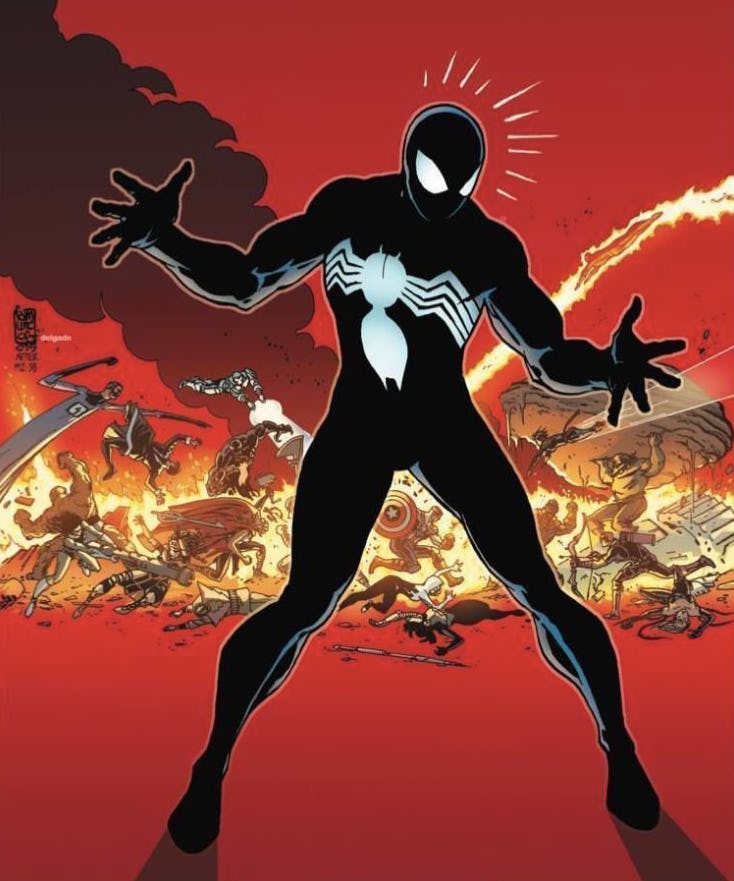
Sixty years ago, Spider-Man hit newsstands for the very first time.
Debuting in Amazing Fantasy #15, the two-part story recounts Spider-Man’s origins, from Peter Parker’s days as a nerdy kid in high school, to him being bitten by a radioactive spider, to Uncle Ben’s death and his ultimate realization that he must use his powers for a greater good.
While the story was just 12 pages long, the response to Spider-Man was immediate. Amazing Fantasy #15 flew off the shelves. A few months later, Spider-Man got his own ongoing series and, in short order, he became Marvel’s biggest hero.
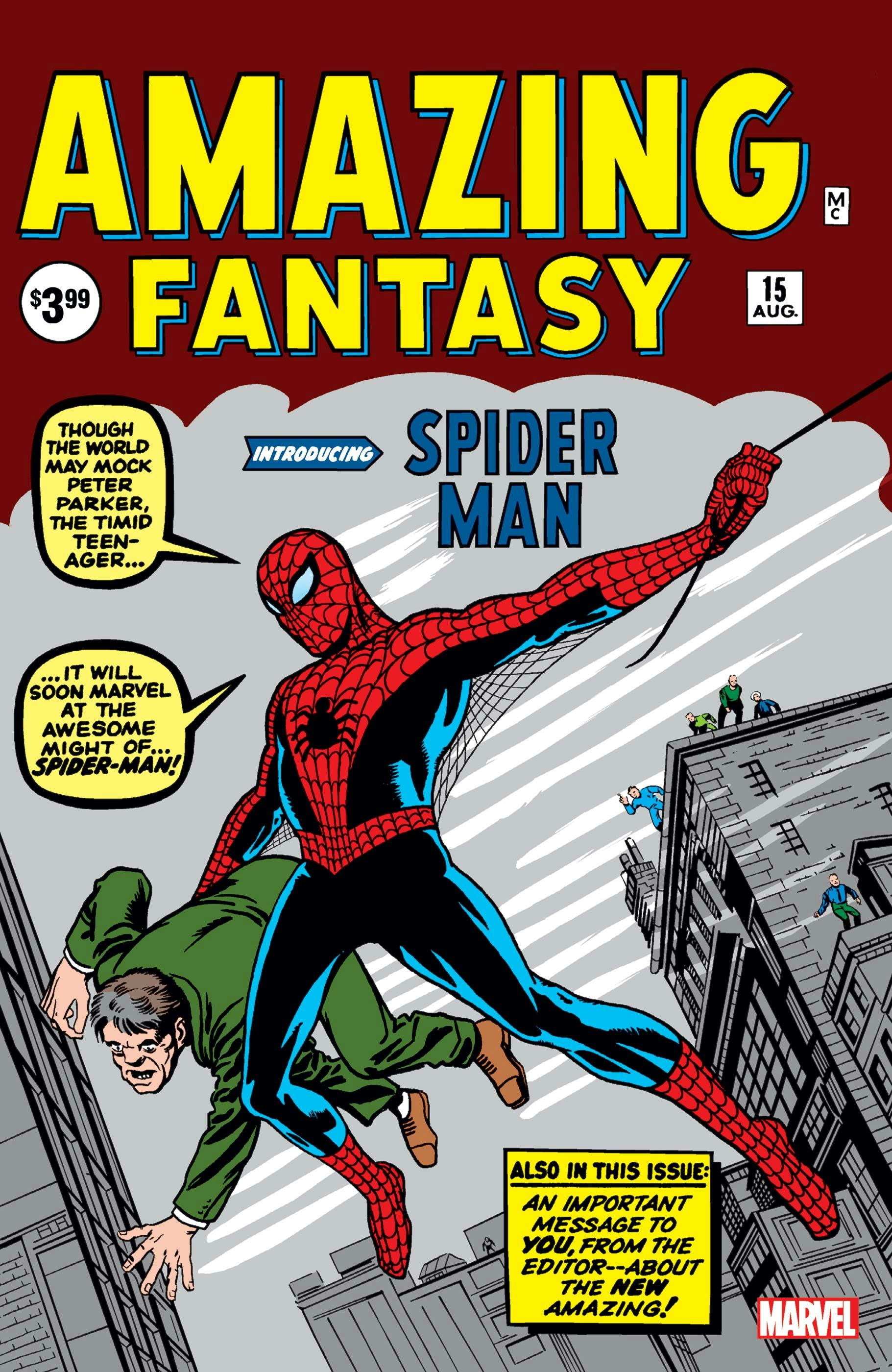
Over the past six decades, Spider-Man has starred in thousands of comic books and been featured on countless pieces of merchandise. He’s appeared in more than a dozen television shows and anywhere from 10 to 20 films (depending upon how you count them). Spider-Man is recognized around the world and consistently ranks among the top five superheroes of all time.
To pay the proper respect to the hero who has such a momentous impact on popular culture, Inverse poured through old interviews, commentaries, documentaries, DVD extras, and comic-con panels to find 60 obscure facts you may not have known about the hero, beginning with how Stan Lee thought him up in the first place.
60. Stan Lee got the idea for Spider-Man from a fly, not a spider. As he told Larry King in 2000, “I saw a fly crawling on the wall and I said, ‘Wow, suppose a person had the power to stick to a wall like an insect?’”
59. When thinking of names for the character, Lee considered “Fly-Man,” “Mosquito-Man,” and “Insect-Man,” but continued on with wall-crawling bugs until he reached “Spider-Man,” which he said sounded “mysterious and dramatic.”
58. Somewhat contradictorily, Lee, at times, also stated that “The Spider,” a pulp character from the 1930s and 1940s, inspired the name of Spider-Man.
57. Stan Lee used a hyphen in Spider-Man to avoid “Spiderman” being read as “Superman.”
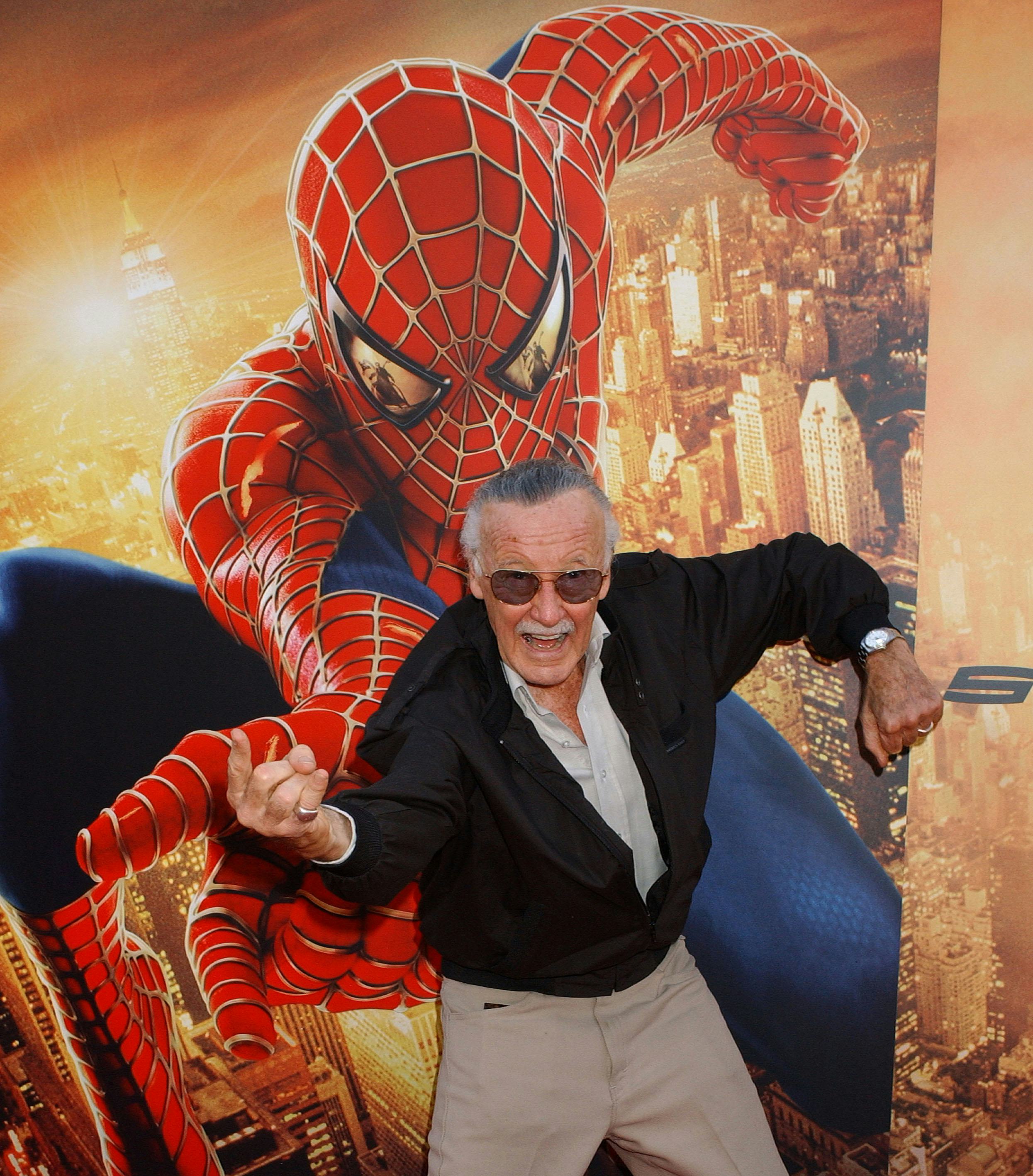
56. When Lee originally suggested Spider-Man to publisher Martin Goodman, the idea was rejected because, as Goodman said, “People hate spiders.” The publisher also rejected Spider-Man being a teenager — as only sidekicks were teens — and that he would have normal problems, like struggling to pay the rent. Lee was forced to shelve the idea for months until Amazing Fantasy #15, the final issue of the series, where he was permitted to tell a story about Spider-Man because, according to Lee, nobody cared what went into the last issue.
55. Originally, Lee went to longtime collaborator Jack Kirby to draw Spider-Man, but Lee felt that King made Spider-Man look too heroic. “I wanted him to be a typical, nebbish-y kind of guy,” said Lee, so he turned instead to Steve Ditko, who designed the iconic look of Spider-Man.
54. At times, Jack Kirby would claim credit for creating Spider-Man, but this was disputed by both Ditko and Lee. While Kirby’s Spider-Man art has never surfaced, Ditko once offered a sketch of what Kirby’s design looked like.
53. To confuse matters even further, in 2015, the New York Post ran a story about the discovery of a Halloween costume from 1954 named “Spider Man,” which featured a webbed mask that bears some resemblance to Spider-Man’s mask. Additionally, the paper stated that Jack Kirby might have designed the costume, as he is rumored to have done work for the costume company in the 1950s. That same costume company, Ben Cooper Inc., also released the first officially licensed Marvel merchandise ever. It was a Spider-Man costume from 1963.
52. According to British TV presenter Jonathan Ross — who spoke off-the-record with Steve Ditko on several occasions — Ditko originally intended for Spider-Man’s suit to be orange and purple, not red and blue. The reason for the change is unclear.
51. Additionally, the blue on Spidey’s costume was only intended to be highlights on black, which was the way black was traditionally represented in comics (just look at any black-haired character in an old comic book). So, Spider-Man’s suit was really red and black at first.
50. Spider-Man’s birthday is generally seen as being August 10 and it was confirmed as such in Spider-Man: Far From Home, but there is some confusion around the date. Amazing Fantasy #15 was simply labeled as “August” without a specific date, which is why “Spider-Man Day” is on August 1. However, the comic itself came out on June 5, 1962, as comic books are dated later than they publish.
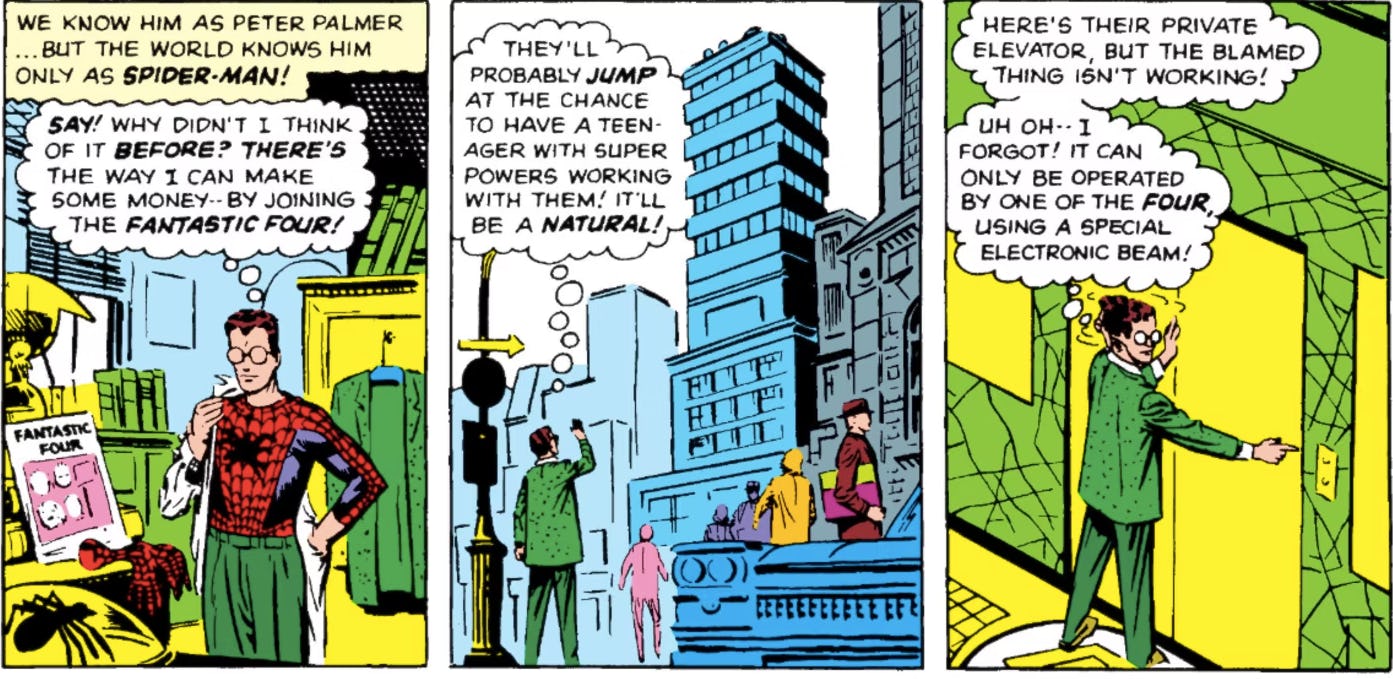
49. In the first issue of The Amazing Spider-Man, Stan Lee mistakenly identified Peter Parker as “Peter Palmer” three times. He was referred to correctly as “Peter Parker” elsewhere in the issue, as well as back in Amazing Fantasy #15.
48. Lee and Ditko produced less than 40 Spider-Man issues together, as Ditko left Marvel in 1966. While his reason for leaving was sometimes attributed to a lack of royalties or a disagreement over the Green Goblin’s identity, Lee and Ditko’s relationship deteriorated over several years. According to Ditko, they stopped talking around issue #25 of The Amazing Spider-Man, which was published in the summer of 1965. Ditko’s last issue was The Amazing Spider-Man #38 from July of 1966.
47. In 2008, when Steve Ditko’s original pages from Amazing Fantasy #15 were donated to the Library of Congress, Ditko told journalist Robert K. Elder that he “couldn’t care less.” Unlike Stan Lee, Ditko rejected the spotlight and rarely gave interviews.
46. The famous Spider-Man theme song for the cartoon was written by three-time Oscar winner Paul Francis Webster and Bob Harris, who wrote the theme for 1962’s Lolita. In 1995, The Ramones covered the theme. As CJ Ramone explained in a 2014 interview, "We got offered to do the Saturday Morning: Cartoon’s Greatest Hits record... So I picked Spider-Man and had to teach it to Johnny [Ramone]." CJ Ramone said he preferred that cover to many they had done on their second-to-last album. Spider-Man's link to the Ramones doesn't end there, as Ramones songs were included in both Spider-Man: Homecoming and Spider-Man: Far From Home.
45. In 1971, the Comics Code Authority refused to approve The Amazing Spider-Man #96 through #98 because the story depicted drug use. But because it showed drugs in a negative way, Stan Lee felt it was important to run the story anyway, so all three issues were published without the approval of the CCA. In 2001, Marvel abandoned code approval entirely and in 2011, the CCA ceased to exist when DC and Archie Comics finally dropped them.
44. In an interview with Syfy Wire, legendary Spider-Man artist John Romita Sr. said his favorite issues were 1972’s The Amazing Spider-Man #108 and #109. Romita had taken over for Ditko in 1966 and continued until 1971. He then left Spider-Man and returned a year later with issue #106. In the 2017 interview, Romita revealed that, during his first run, “I always felt like a visitor on Spider-Man, like I was always doing Ditko somehow.” It wasn’t until he left and came back that he felt he finally came into his own with the character.
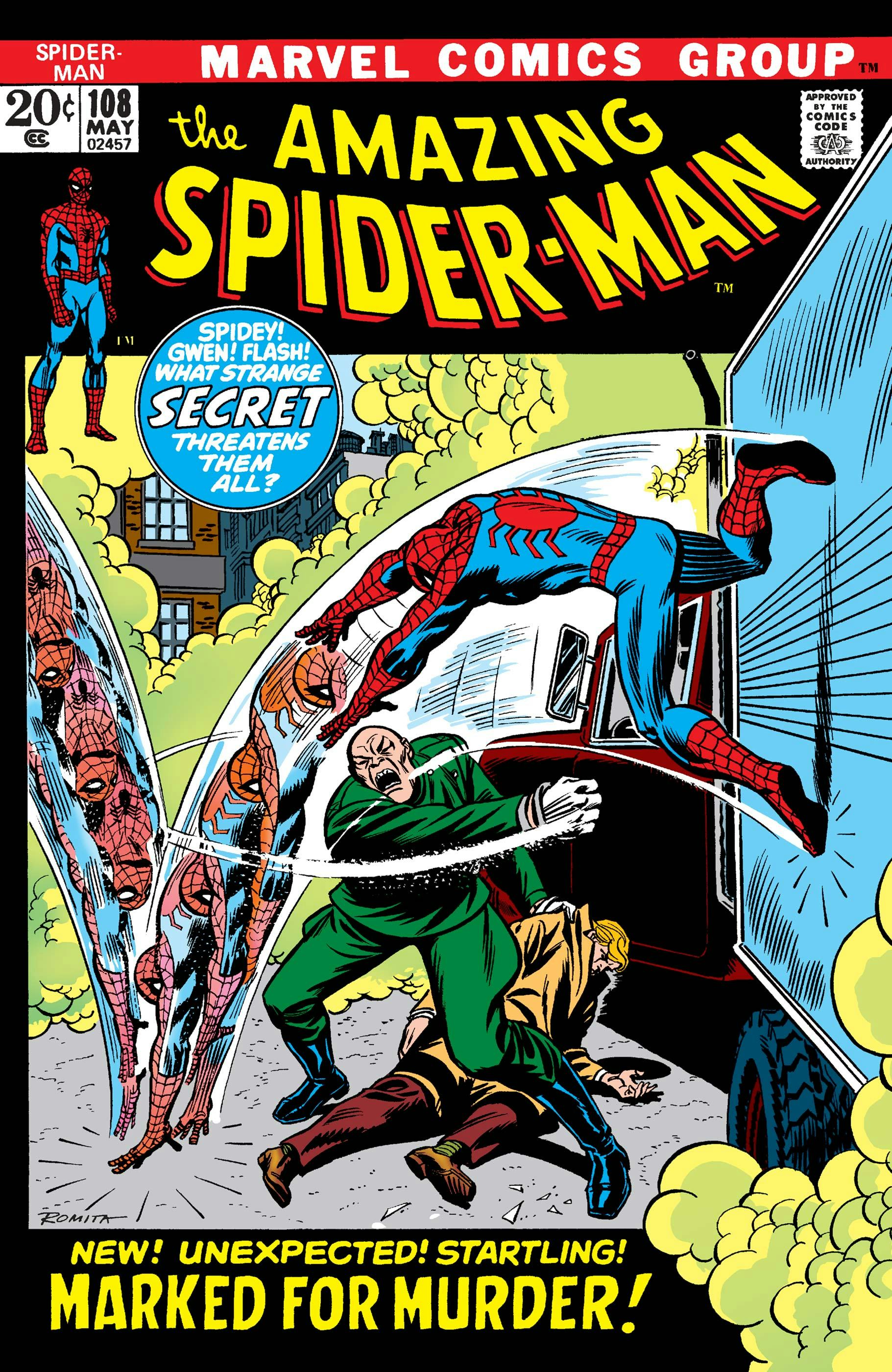

43. Romita Sr. said he based the look of Mary Jane Watson on actor and sex symbol Ann-Margaret, who starred in films like Bye Bye Birdie, Viva Las Vegas, and Grumpy Old Men.
42. In a 1991 documentary series called The Comic Book Greats, Stan Lee recalled how he and John Romita Sr. tried and failed to make Gwen Stacy as interesting a character as Mary Jane Watson was. Lee said, “[Gwen] was the typical ingenue, and Mary Jane had all that life and that spark and we said ‘We’ve got to do something to make Gwen just as appealing,’ and we couldn’t do it.”
41. Gwen Stacy was killed off in The Amazing Spider-Man #121 in 1973, but, according to Romita Sr., editor Roy Thomas originally wanted Aunt May to die. In 2015, Romita recounted his conversation with writer Gerry Conway during a plotting session: “I said, if you kill Aunt May, you're not going to do a damn bit of good to the strip. It'll lose one of Peter Parker's hangups. He won't have to worry about Aunt May anymore. He won't be treated like a child anymore. If we want to make any kind of stir in the monthly line, we have to kill somebody important. That means we need to kill Mary Jane or Gwen Stacy.” Ultimately, Gwen was chosen because she was Peter’s girlfriend at the time, whereas Mary Jane was more of a comedic side character.
40. In 1973, an unauthorized film was made in Turkey where Spider-Man is a villain fighting Captain America.
39. The first live-action depiction of Spider-Man came in 1974 on the children’s television show The Electric Company. Entitled “Spidey Super Stories,” the three- to five-minute segments starred Danny Seagren, a trained dancer and puppeteer for Jim Henson. In a 2001 interview, Romita Sr. praised the shorts as “very clever and very cute and very well done.”
38. Romita Sr. felt the opposite way about the 1977 live-action series starring Nicholas Hammond, calling it “badly done.” Romita Sr. was serving as Marvel’s art director during this period and he recalled that the producers of the show “tried to pull the wool over Stan’s eyes” when it came to the color of Spidey’s costume. The producers told Lee that the blue in Spider-Man’s suit wouldn’t show up against a blue screen, so the suit would have to be red and black instead. But when Romita Sr. explained to Lee that they could simply paint the wall another color — like green, for example — Lee called the producers and “chewed those guys a new behind.” After that, Spider-Man was given his traditional red and blue suit.
37. According to 1977 Peter Parker actor Nicholas Hammond, there were plans to make a TV movie in 1984 bringing him back as Spider-Man — this time in Spidey’s black costume — along with Lou Ferrigno as the Hulk and Bill Bixby as David Banner (Bixby would also serve as director). The project fell through due to Ferrigno being unavailable.
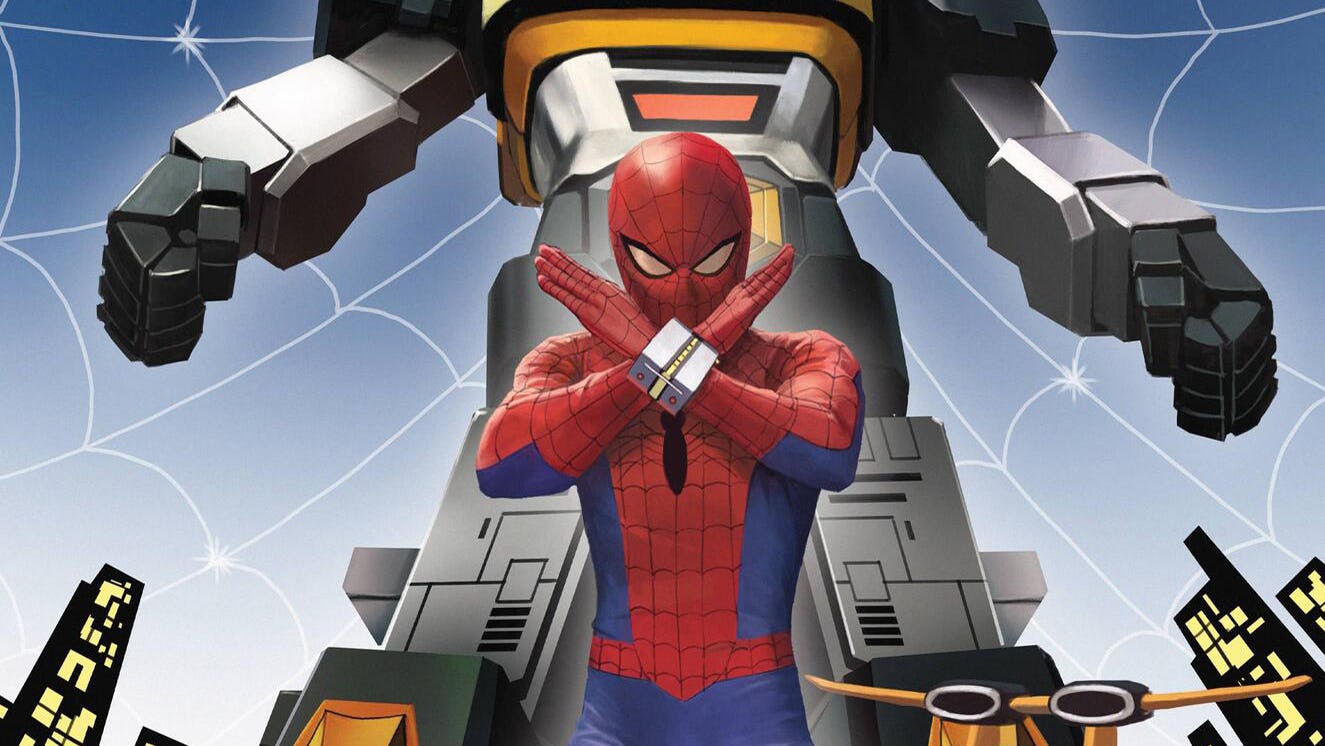
36. In 1978, the Japanese live-action Spider-Man show produced by the Toei Company debuted, which deviated a lot from the source material. In it, Spider-Man would fight villains that would later grow to giant size, then Spider-Man would summon a giant robot to fight them. If that sounds familiar, it’s because Toei used the exact same formula for Super Sentai and Power Rangers.
35. Spider-Man’s black costume debuted in early 1984 in The Amazing Spider-Man #252. It was designed by a fan named Randy Schueller who entered a contest by Marvel for aspiring writers and artists in 1982. He was paid $220 for his work. (The new suit wasn’t explained until months later in Secret Wars.)
34. Schueller proposed a black and red suit made of the same “unstable molecules” that the Fantastic Four’s suits are made of. This would later be changed to a black and white suit made of a living organism — which, of course, would later become Venom.
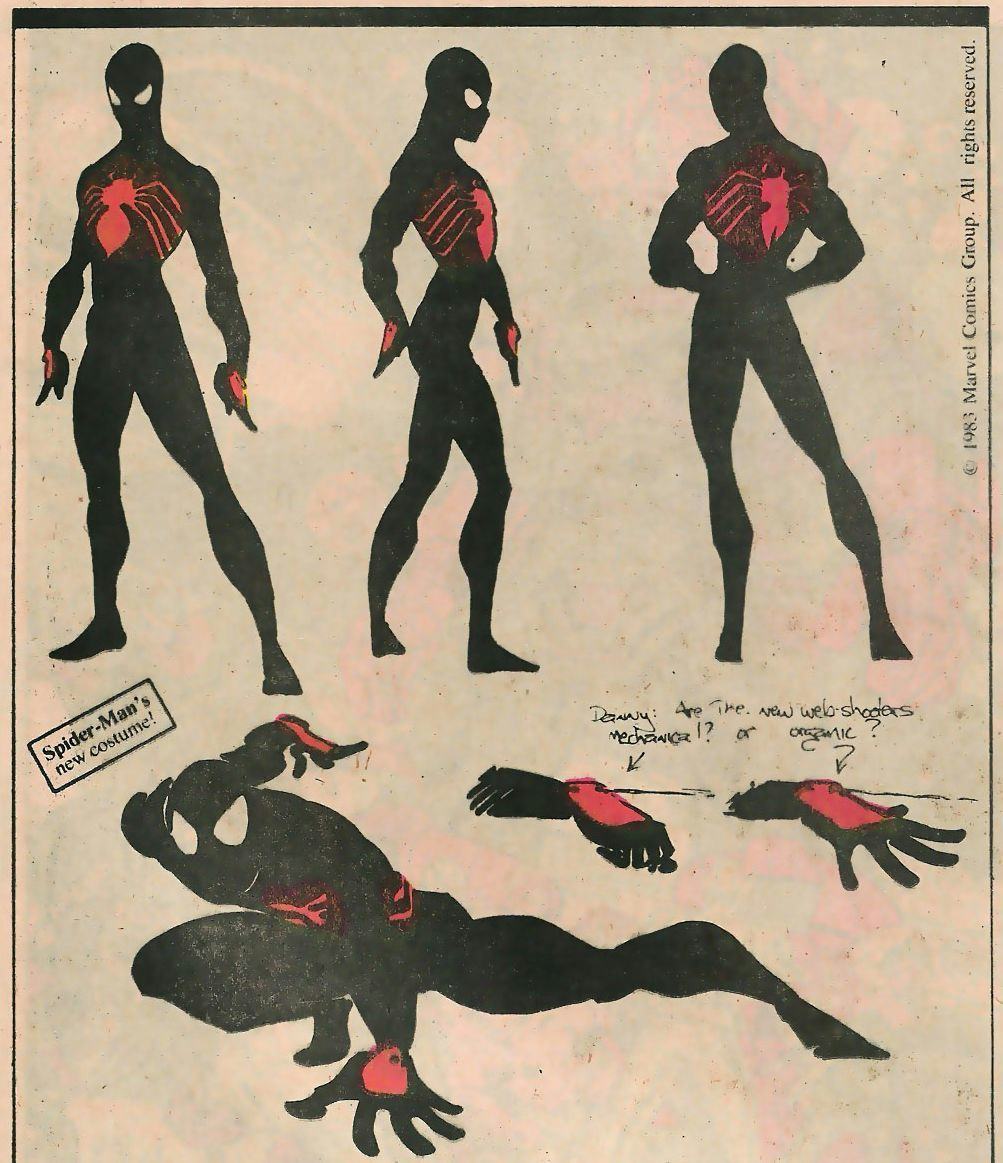
33. Peter Parker and Mary Jane Watson got married in 1987 at Stan Lee’s suggestion. Lee was writing the daily Spider-Man comic strip at the time and he wanted to have the wedding happen simultaneously in both the comic book and comic strip. Because of how far ahead comic books are planned out, coordinating this was incredibly difficult, so much so that Lee later said it was “the toughest thing creatively that I think I have ever done or the people at Marvel had done.”
32. To promote the issue of The Amazing Spider-Man where Peter Parker and Mary Jane Watson got married, Marvel rented out Shea Stadium and hired actors to play Spidey and MJ, as well as the Hulk and Captain America, who acted as witnesses. According to The New York Times, more than 45,000 people attended the event. Naturally, Stan Lee officiated the ceremony.
31. When Todd McFarlane became the regular artist on The Amazing Spider-Man in 1987, he said he tried to merge the “quirky, funky style” of Steve Ditko with the “pretty people [and] great storytelling” of John Romita Sr. Additionally, in an interview for The Comic Book Greats documentary series, McFarlane said he liked to put Spidey in more contorted “impossible positions,” hoping to emphasize the “spider” in Spider-Man.
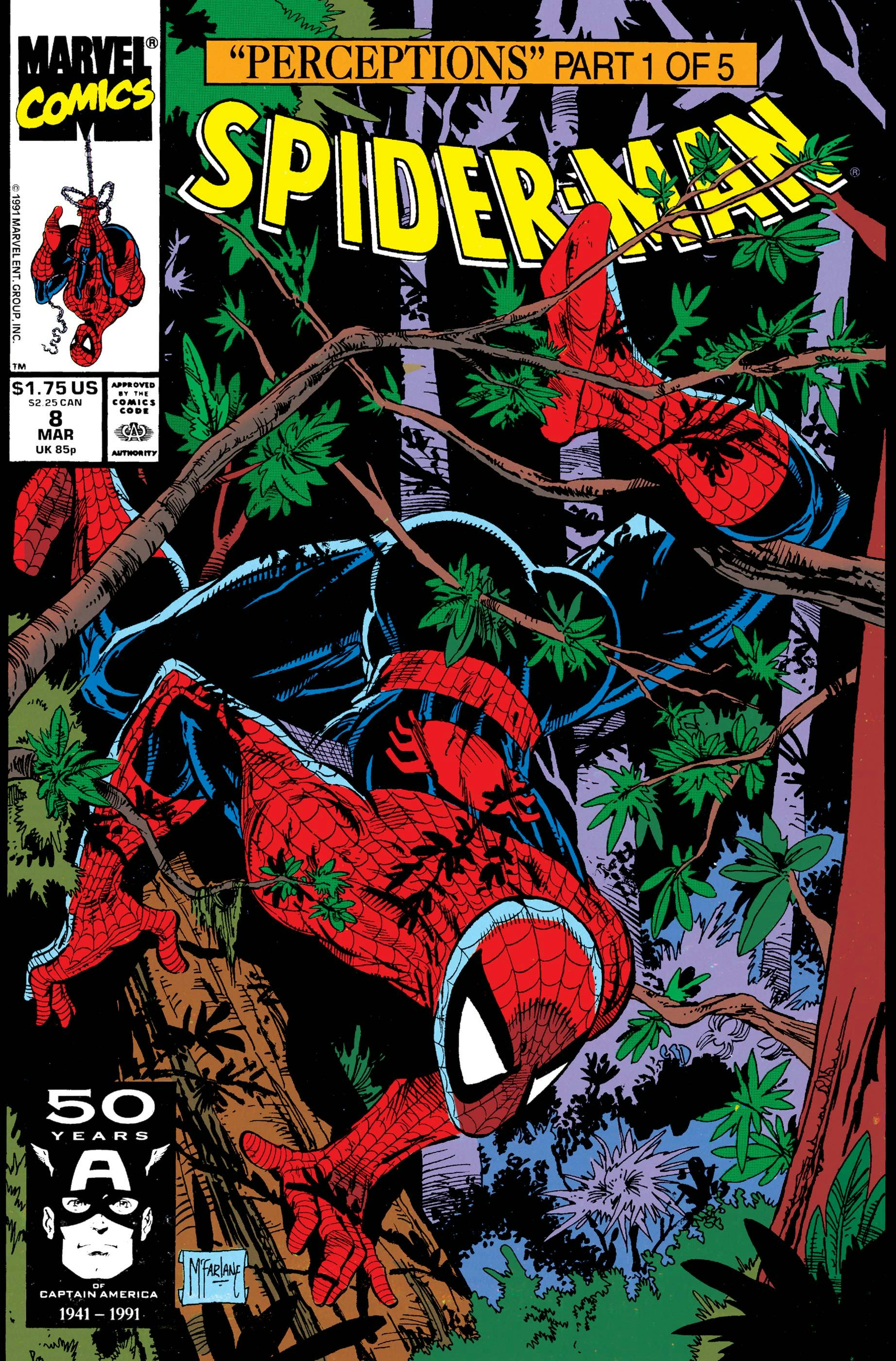
30. Spider-Man permanently gave up his black costume in The Amazing Spider-Man #300. This was because of Todd McFarlane, who explained in a video he posted to Instagram, “They wanted me to do Spider-Man but he was in this black costume. I didn’t want to draw this black costume, it meant nothing to me. I wanted to draw the red and blue.”
29. McFarlane’s preference for the classic suit was also why Venom was created. “300 [was] the origin of Venom, but, to me, it was [about] ‘How the hell do we get this goddamn black costume off Peter Parker!’”
28. For the 1990s Spider-Man animated series, producer Joe Semper requested that Marvel supply him with a complete collection of Spider-Man comics spanning more than 30 years. This research would go on to inform a series that many fans regard as the most faithful Spider-Man adaptation ever.
27. The theme song for the 1990s Spider-Man cartoon was performed by Joe Perry of Aerosmith.
26. The finale of the 1990s Spider-Man cartoon was a two-part saga named “Spider Wars” which featured several different Spider-Mans from different dimensions teaming up. This would be the first “Spider-Verse” type story. According to Semper, the reason he came up with the idea was to represent some of the different Spider-Man costumes and variants that had been featured in the toy line for his cartoon.
25. In the mid-1990s, James Cameron was set to make a Spider-Man film, but issues with acquiring the rights to the film eventually torpedoed the project. In his book, Tech Noir: The Art of James Cameron, Cameron called Spider-Man, “the greatest movie I never made.”
24. Cameron also wrote the screenplay, which was a good deal more adult than any Spider-Man film that would eventually hit theaters. For example, Cameron’s script featured a sex scene with Spider-Man and Mary Jane on the Brooklyn Bridge.
23. According to an Empire interview with Leonardo DiCaprio, the actor met with Cameron about potentially playing Spider-Man in the film. Additionally, Arnold Schwarzenegger told Empire that Cameron wanted him as Doctor Octopus.

22. Variety reported that, during his first meeting with Sony about directing the 2002 Spider-Man film, Sam Raimi made a case for himself by telling those in the room what a big Spider-Man fan he was. He told them that, as a nerdy kid, he identified with Peter Parker and, as a child, he had a painting of Spider-Man on his wall.
21. In an earlier draft of the first film’s screenplay, Spider-Man was supposed to face off against Doctor Octopus, Sandman, and Electro. Raimi changed this because he wanted the focus to remain on Spider-Man, so he chose a single villain that would have the greatest personal impact on Peter Parker. Because Norman Osborn was Peter’s best friend’s father, and, at times, was a surrogate father to Peter, Green Goblin became the natural choice.
20. Sam Raimi revealed in a press conference in 2002 that the reason why he gave Spider-Man organic webs was that he felt that if Peter Parker were able to develop the webs himself — something even scientists in the real world couldn’t do — it made the character less relatable. Raimi said this choice was inspired by James Cameron’s Spider-Man script.
19. During the wrestling match scene in the first film, Sam Raimi’s hand is the one that pushes Spider-Man towards the ring. In a commentary of the film, Tobey Maguire also revealed that Sam Raimi was one of the people throwing food at him from offscreen.
18. In a 2007 interview with Jonathan Ross, Maguire said that, when he was wearing the Spider-Man suit, “They actually have to give me a dance belt in order to compress certain ‘packaging’… because we’re making a film for children.”
17. To prepare for his role as J. Jonah Jameson, J.K. Simmons spent several days at the New York Post offices. In the film, when Jameson offered Parker $200 for his photos, the amount had been changed to the actual going rate based on Simmons’ research.
16. During the famous upside-down kiss in the film, Tobey Maguire struggled to breathe, as he had to kiss Kirsten Dunst in the rain, with his mask over his nose all while he was hanging upside-down.
15. There were originally no plans to include Willem Dafoe in Spider-Man 2, but he stopped by the set one day and Raimi worked in a cameo for him. In addition to that, Raimi surprised Alfred Molina by putting the Doc Ock tentacles on Dafoe to jokingly offer up some acting tips.
14. For Spider-Man 3, Sam Raimi was not interested in telling the Venom story but was forced to do so by Sony. Ultimately, Raimi was very unhappy with the final product of Spider-Man 3, saying in a 2014 Nerdist interview, “I think [raising the stakes] was the thinking going into it, and I think that’s what doomed us. I should’ve just stuck with the characters and the relationships and progressed them to the next step and not tried to top the bar.”
13. At one point, Spider-Man 3’s story became so bloated that screenwriter Alvin Sargent toyed with splitting the story into two films, but couldn’t find a satisfying climax in the middle to conclude the first story.
12. In an interview with Rolling Stone, Raimi said he was hoping to redeem the franchise with Spider-Man 4, which probably would have featured Bruce Campbell as Mysterio and John Malkovitch as Vulture. The film was shelved though when Raimi ran into script difficulties and he encouraged Sony to go forward with the reboot they were already making plans for.
11. Spider-Verse comics writer Dan Slott said he was inspired to bring all the Spider-Mans together during his work writing the 2010 video game Spider-Man Shattered Dimensions. The game featured Spider-Mans from four different dimensions, but Slott said he was frustrated that the Spider-Mans never really interacted. He then proposed the idea to Marvel to do a comic with every Spider-Man working together.
10. For 2012’s The Amazing Spider-Man, Andrew Garfield said that he shed a tear the first time he wore the costume. During a speech he made at Comic-Con in 2011, Garfield also said “I needed Spidey in my life as a kid. He gave me hope.”
9. While both Garfield and Tom Holland were Spider-Man fans growing up, Tobey Maguire was not, saying once in an interview, “I never read comics as a kid.”
8. During breaks in filming, Andrew Garfield would walk around New York City in costume to find kids playing basketball, then he’d join in their games as Spider-Man.
7. The infamous Sony hack from 2014 revealed that Andrew Garfield’s Spider-Man almost appeared in Captain America: Civil War in a move that would have merged the MCU and Sony’s Spider-Man universe. Ultimately, both Sony and Marvel decided to start fresh with Spider-Man and Tom Holland was cast as the new wallcrawler.
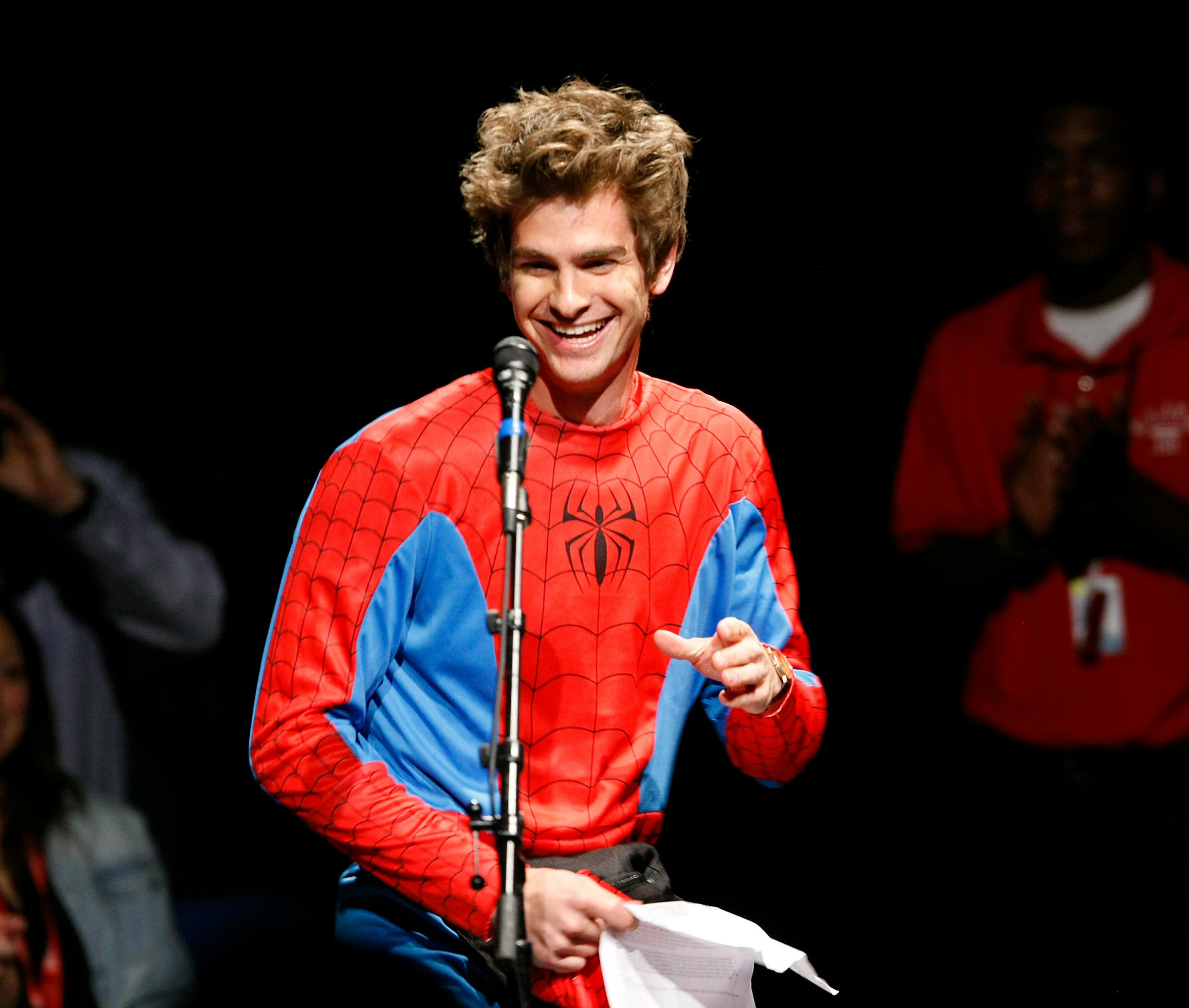
6. The hacked emails also revealed that, in addition to the lackluster critical and audience responses to The Amazing Spider-Man 2, part of the reason why Andrew Garfield lost the role of Spider-Man was that he angered Sony bosses by not showing up for a high-profile dinner in Brazil where The Amazing Spider-Man 3 was supposed to be announced. According to Garfield, he failed to show up because he had jetlag.
5. The famous poster for Spider-Man: Homecoming that featured Spider-Man lying down with his jacket on, listening to his headphones, was not from an official photo shoot. As Tom Holland explained, “Interesting story about that poster is that is actually me asleep. That’s not part of the movie; that’s me in-between takes asleep. We were shooting this scene, and I was just really tired that day, and I was just asleep on the floor, and the photographer took a picture.”
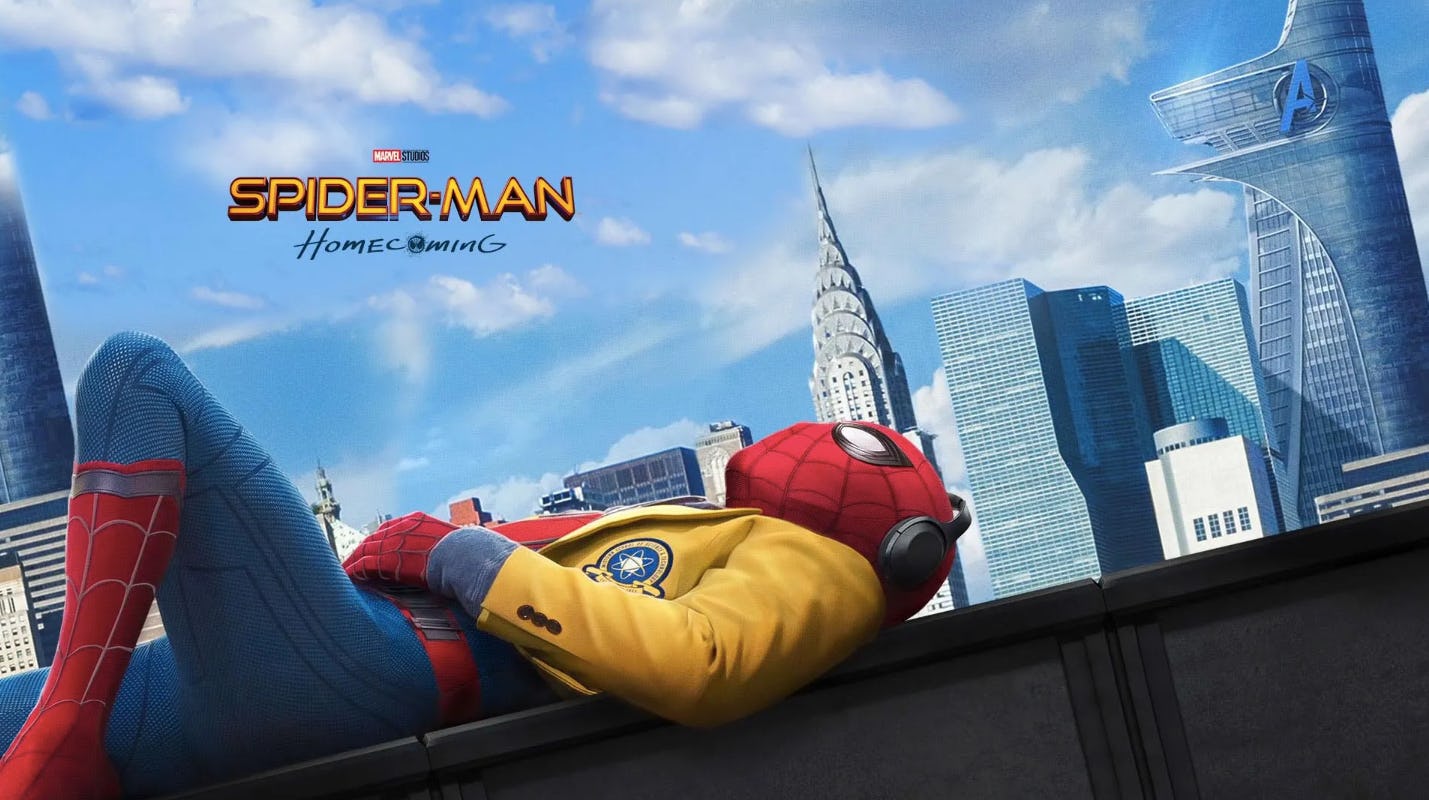
4. Prior to filming Spider-Man Homecoming, director Jon Watts had the cast watch a marathon of John Hughes films, as he wanted that kind of coming-of-age feel in his movie. Although, in a Hot Ones interview, Holland revealed that, for his take on Peter Parker, he took more inspiration from Marty McFly in Back to the Future. He also compared Peter’s relationship with Tony Stark to Doc and Marty’s relationship.
3. During the 2018 Comic-Con panel for Spider-Man: Into the Spider-Verse, Phil Lord said that, when Sony came to him and Chris Miller to make an animated Spider-Man movie, they said, “We’ll do it, but it has to be Miles [Morales].” Their goal was to tell the story in a “refreshing way” and doing it with Miles instead of Peter Parker was their way to do that.
2. Spider-Man’s death at the end of Avengers: Infinity War was originally supposed to happen quickly, just like the rest of the characters who were dusted by Thanos. But in the Blu-ray commentary, co-director Joe Russo says, “[Holland] kept driving to put more and more emotion into it. And [I] just went up to Tom and said, ‘You don’t wanna go. You’re a child. And you’re using your strength as Spider-Man to fight this.’ And then that was the performance that came out.”
1. For Spider-Man: No Way Home, the idea to bring Tobey Maguire, Andrew Garfield, and Tom Holland together came out of an earlier idea for the film’s post-credits scene. As Chris McKenna, one of the film’s screenwriters, explained, “We were kicking around a lot of ideas that were not multiverse related… and Kevin [Feige] loved the idea of maybe doing a tag that had something to do with [the] multiverse.” But after they were hitting some difficulties in developing the story, Feige suggested, “That tag idea, what if that was the movie?” The result would be a third act that featured all three cinematic Spider-Mans together in what many have regarded as a culmination of 20 years of Spider-Man stories on film.







